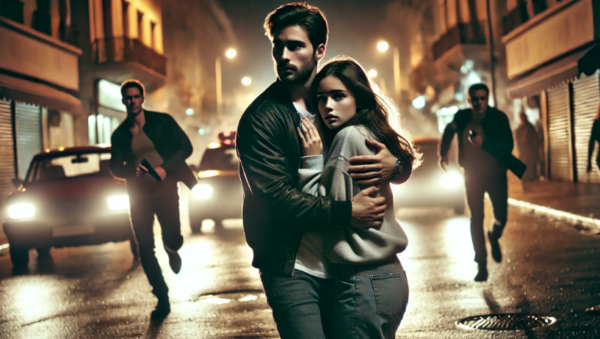Choosing the right Point of View (POV) for your novel is like picking the perfect pair of shoes for a big event. Sure, you could show up to a gala in Crocs, but is that really the impression you want to leave? The same goes for POV: it’s the lens through which your readers experience your story, and picking the wrong one can derail even the best ideas.
In storytelling, POV determines who’s telling the story and how much the reader gets to know. Is your narrator deep inside one character’s head? Floating above the action like an all-seeing deity? Or, in a rare twist, addressing the reader directly? Your choice shapes how intimate your story feels, how much your audience trusts the narrator, and what juicy secrets you reveal (or conceal).
Get it right, and your story pulls readers in like a gravitational force—letting them feel emotions, see the world through your characters’ eyes, and stay glued to every twist. Get it wrong, and it can feel like a disorganized mess, with readers wondering whose story they’re even following.
So, before you dive into writing your next big novel, let’s talk POV: the most important decision you’ll make after naming your main character. Let’s get it right—your readers (and your Crocs) will thank you.
Your Publishing Journey Awaits – Start NowWhat Are the Main Points of View?
Point of View (POV) is your novel’s camera lens, dictating how your readers see the story unfold. Pick the right one, and you’ll captivate them. Pick the wrong one, and they might feel like they’re peering through a foggy window. Let’s break down the four primary options—plus a bonus wildcard for the adventurous.
1. First Person POV
This perspective uses “I” or “we,” letting the narrator tell the story directly. Think Katniss in The Hunger Games.
- Pros: Creates deep intimacy and allows for a distinct, personal voice.
- Cons: Limited to what the narrator knows, which can restrict the story’s scope.
2. Second Person POV
Here, “you” take center stage, as seen in If on a Winter’s Night a Traveler. It’s like the narrator is talking directly to the reader.
- Pros: Unique and immersive—great for experimental fiction or interactive stories.
- Cons: Hard to sustain for long narratives; often feels gimmicky if not handled well.
3. Third Person Limited POV
This focuses on one character’s thoughts and experiences from multiple points, using pronouns like “he,” “she,” or “they.” Think Harry Potter.
- Pros: Combines intimacy with flexibility.
- Cons: It can feel restrictive if the story demands multiple perspectives.
4. Third Person Omniscient POV
An all-knowing narrator observes everything, hopping between multiple characters (A Song of Ice and Fire).
- Pros: Great for sprawling casts and complex worlds.
- Cons: It risks overwhelming the reader or creating emotional distance.
5. The Elusive Fourth Person POV
Rarely used, this experimental POV describes collective experiences, like “we all felt this.” It’s abstract, unusual, and typically suited for literary fiction.
Each POV comes with its own strengths and challenges. Your story’s scope, tone, and intimacy will guide you to the perfect fit—so choose wisely!
It’s All About Me: The First Person POV
First-person POV puts your reader directly in the narrator’s shoes, using pronouns like “I” and “we” to tell the story. This perspective gives readers a front-row seat to the first-person narrator’s thoughts, feelings, and experiences, creating a deeply personal connection. It’s like sitting across from a friend who’s recounting a wild story over coffee—except this friend might have some secrets up their sleeve.
The Benefits
- Creates Intimacy: First person POV lets readers see the world through one character’s eyes, fostering a close bond. You’re not just reading about Katniss Everdeen (The Hunger Games)—you are Katniss, feeling her fear and determination.
- Perfect for Unreliable Narrators: This POV shines when the narrator’s version of events can’t always be trusted. Think Holden Caulfield in Catcher in the Rye or the complex, quirky characters of John Green novels. Their bias, denial, or outright lies add layers of intrigue to the story.
The Drawbacks
- Limited Perspective: The reader only knows what the narrator knows. If the narrator isn’t present for key events, those moments are off-limits (unless someone tells them later).
- Risk of Overload: Spending the entire book in one character’s head can become suffocating if their voice isn’t engaging enough.
Tips for Using First-Person POV
- Create a Distinct Voice: Your narrator should have a unique personality, complete with quirks, opinions, and biases. A strong voice will keep readers hooked.
- Choose the Right Story: First person POV works best when the story benefits from a close, personal perspective—like a coming-of-age tale, a thriller with a secretive narrator, or a character-driven drama.
- Use Unreliable Narration Strategically: If your narrator isn’t entirely truthful, drop hints to clue readers in without giving too much away.
By drawing readers directly into one character’s world, first-person POV can make your novel more immersive, emotional, and unforgettable. Just make sure your narrator is someone worth spending 300 pages with!
You Are the Star: The Rare and Daring Second-Person POV
Second-person POV flips the script by putting a second person, you—yes, you—at the center of the story. Using pronouns like “you” and “your,” this perspective speaks directly to the reader, immersing them as the main character. Instead of observing someone else’s journey, the second-person POV asks you to live it. It’s bold, it’s personal, and it’s guaranteed to grab attention.
The Pros
- Immersive and Unique: This POV pulls readers directly into the narrative, making them feel like they’re part of the story. It’s rare enough to feel fresh and exciting, which helps it stand out.
- Attention-grabbing: By addressing the reader directly, second person POV instantly breaks the fourth wall and creates a sense of urgency or intimacy.
The Cons
- Hard to Sustain: Keeping this perspective engaging for an entire novel is a challenge. It’s more commonly used in short stories, experimental fiction, or interactive formats.
- Can Feel Gimmicky: If overused or poorly executed, second-person POV risks alienating readers instead of drawing them in.
Where It Shines
Second-person POV works wonders in interactive storytelling (e.g., Choose Your Own Adventure books), reflective writing (where the story mirrors the reader’s experiences), or experimental fiction like Italo Calvino’s If on a Winter’s Night a Traveler. It’s also popular in flash fiction and poetry, where brevity enhances its impact.
If you want to push boundaries and create a narrative that feels personal and immediate, second-person POV might just be the star of your story!
Third Person POV: The Versatile Classic
Third-person POV is the Swiss Army knife of storytelling, offering flexibility, clarity, and a wide range of creative options. Using pronouns like “he,” “she,” and “they,” this perspective allows you to tailor your third-person pronouns and narrative to the needs of your story—whether it’s intimate and character-focused or sweeping and omniscient. Let’s break it down:
A. In One Character’s Shoes: The Third Person Limited POV
Third-person limited POV follows one character closely, diving into their thoughts, feelings, and experiences while maintaining a bit of narrative distance. Think Harry Potter, where the story primarily revolves around Harry’s first-person perspective only, but it’s not told in his voice.
Benefits:
- Combines the intimacy of first person POV with the flexibility of third person.
- Gives the reader a deep connection to one character while still allowing the narrator to describe the world around them.
Drawbacks:
- You’re limited to what the POV character knows, which can make plotting tricky if important events happen outside their experience.
- Switching between characters requires a careful hand to avoid confusing readers.
B. The All-Knowing Narrator: Third Person Omniscient POV
With third-person omniscient, the narrator has a godlike view of the story. They know everything—what every character is thinking, feeling, and doing—and can reveal this information to the reader as they see fit. Epic stories like A Song of Ice and Fire and magical tales like The Night Circus use this POV to juggle large casts and complex plots.
Benefits:
- Perfect for sprawling, multi-character narratives where you need to explore different perspectives.
- Allows you to show events happening simultaneously or reveal things the characters don’t know.
Drawbacks:
- Risks feeling distant or impersonal if the narrator is too detached.
- It can overwhelm the reader with too much information, especially if every character’s thoughts are dumped at once.
Third-person POV is the storytelling workhorse for a reason. Whether you want to dive deep into one character’s shoes or orchestrate a grand, omniscient third-person point of view of your fictional world, this POV has you covered. Just choose wisely—and always keep your readers oriented!
Your Publishing Journey Awaits – Start NowMultiple POVs: The More, The Merrier?
Sometimes, one point of view just isn’t enough to capture the scope or complexity of a story. That’s where multiple POVs come in, allowing writers to explore different points in their narrative through the eyes of various characters. Think of Game of Thrones, where each chapter immerses you in the world of a different character, or ensemble-driven novels that weave together diverse perspectives to create a rich tapestry of experiences.
Benefits
- Diverse Perspectives: Multiple POVs let you show the same world or events from different vantage points, offering a more nuanced and layered narrative.
- Broader Scope: With multiple POVs, you can juggle large casts, explore subplots, and reveal information the main character wouldn’t otherwise know.
- Enhanced Tension: Seeing the same scene from opposing perspectives (e.g., the hero vs. the antagonist) can heighten the drama and complexity of your story.
Drawbacks
- Potential Confusion: If transitions between POVs aren’t clear, readers may struggle to keep track of whose head they’re in.
- Fragmented Focus: Too many perspectives can dilute the emotional depth of the story if not handled carefully.
When done well, mixing POVs can create a dynamic and compelling narrative. Just make sure your readers aren’t left feeling like they’re juggling too many characters at once!
Up Close and Personal or Watching From Afar?
Narrative distance refers to how close (or far) the narrator allows the reader to get to the characters’ thoughts, emotions, and experiences. It’s the difference between standing right next to a character, feeling their heart race, or observing them from a detached, bird’s-eye point of view. Getting this balance right is crucial for crafting a reader’s emotional experience.
Close Narration
Close narrative distance plunges the reader directly into a character’s mind, creating intimacy and emotional impact. It’s like experiencing a first-person perspective of the world through their eyes, hearing their inner thoughts as if they’re your own. First-person POV (The Hunger Games) and third-person limited POV (Harry Potter) often utilize close distance to make the reader feel deeply connected to the protagonist.
Distant Narration
Distant narration, on the other hand, pulls back to offer a character’s perspective or a broader view. This style creates an objective, almost cinematic feel, ideal for exploring sprawling casts or complex plots. Third-person omniscient POV (The Night Circus) often uses distant narration to reveal multiple perspectives or paint a large-scale picture of the story’s world.
Mastering the Balance
Modern fiction frequently blends personal narratives with distances. For example, A Song of Ice and Fire combines close narration for individual characters with occasional sweeping, distant perspectives. This mix keeps the emotional stakes high while offering a comprehensive view of the story.
Choosing the right narrative distance is like adjusting a camera lens. Sometimes, you need to zoom in and capture the tears. Other times, you need to pan out and show the storm rolling in. Use it wisely to shape your reader’s experience!
Choosing the Best POV: It’s All About Personal Preference
Selecting the right POV for your story is a bit like choosing an outfit for an event—it depends on the occasion, the vibe you want to convey, and what makes you (and your story) feel comfortable. Different POVs suit different types of stories, and the best choice often comes down to personal preference and creative experimentation.
Key Factors to Consider
- Genre: Certain POVs naturally align with specific genres. First-person POV thrives in YA (The Hunger Games), where readers crave an intimate connection to the protagonist. Third-person omniscient, with its godlike perspective, works well for epic fantasy (A Song of Ice and Fire) or multi-character dramas.
- Theme and Tone: What kind of story are you telling? If you want a close, emotional journey, first-person or third-person limited POV might be your best bet. For a broader, more detached tone, third-person omniscient fits the bill.
- Main Character’s Personality: Consider your protagonist’s voice. Are they witty, sarcastic, or introspective? A strong, distinctive voice often shines in first person POV, while quieter characters might benefit from the subtlety of limited third person.
Experiment and Discover
The best way to find the right POV is to try different options. Write a scene in first person, then rewrite it in third person limited or an omniscient narrator. See what clicks! Ultimately, the perfect POV is the one that brings your story to life and resonates with your readers. Don’t be afraid to experiment—it’s your story, and the right POV is waiting for you to uncover it.
Choose Wisely, Write Boldly
Choosing the right Point of View isn’t just a technical decision—it’s the heart of your storytelling. POV shapes how readers experience your characters, connect with your world, and feel the emotions pulsing through your narrative. Whether you’re diving into the intimacy of a first-person narrative, embracing the flexibility of the third person, or experimenting with something bold like the second person, your choice of POV will define the soul of your story.
If you’re a beginner, don’t be afraid to play around! Write a scene from multiple perspectives to see what fits best. Experimentation isn’t wasted effort—it’s how you discover what works for your voice and your story.
Remember: The right POV doesn’t just tell your story—it transforms it.
Ready to take your storytelling to the next level? At Spines, we’re here to help you refine your craft and bring your narrative to life. Explore our tips, resources, and expert guidance to make your writing shine! Write boldly with Spines by your side.
Your Publishing Journey Awaits – Start Now







